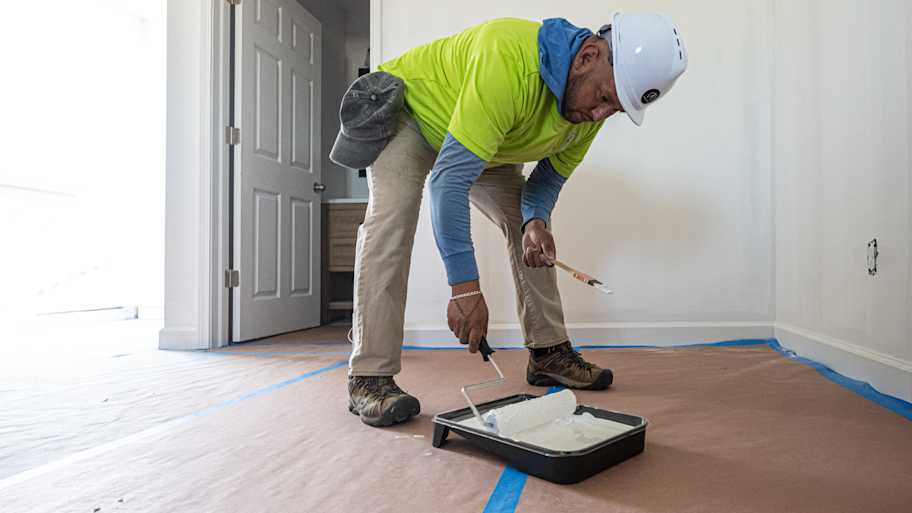How to Pick the Best Paint Colors for a Primary Bathroom
Because paint packs a lot of power


When planning a painting project, the first order of business is figuring out what color to paint your walls. In the primary bath, you may want to create a spa-like refuge within your home with a soothing color scheme. Or you may opt for a bold color that boosts your energy level.
Here are some tips for selecting the right paint color (and paint finish!) for your primary bathroom’s walls.
Coordinate With Existing Colors and Motifs
When considering interior wall paint colors, take a good look at the existing finishes and material palette in the bathroom. You want to pick a shade that coordinates with the cabinet color, tile pattern, metal hardware, and light fixtures. It’s also worth considering the color scheme of the primary bedroom, especially if it’s an en suite bath.
Go Neutral in Busy Spaces

If there are busy details and tile motifs in the bathroom—or if it’s a dark space—you can keep the room clean and bright by selecting a crisp white paint. If your bathroom incorporates cool colors, select a white with gray undertones; and for a bath with earthy brown shades, choose a warmer white.
Other neutrals to consider are grays, browns, and taupes to keep the space feeling grounded and serene. When selecting a neutral, pay attention to the undertones, as that is what gives the paint color nuance and definition. For instance, a gray with purple undertones reads cold and a gray with brown undertones appears earthy.
When to Pick Brighter, Bolder Colors
Bathrooms are a great place to add color. In smaller spaces you can have a little more fun with shades and be bold. If your existing bathroom palette is neutral—especially black and white—you can go wild with hues.
First, ask yourself how you want to feel in the space. If you want to boost your energy levels, go warm and bright. If you want to relax, think cool and soft shades.
Try an energizing red for a jolt of energy or a sunny yellow to lift your spirits. Or, if you are looking to create a spa-like sanctuary, shades of blue, green, and purple instill a feeling of relaxation and serenity.
Consider Painting Other Elements
While you’re giving your bathroom a color refresh, it may be worth painting outdated cabinetry as well. Consider painting your vanity or storage if it’s old or an unusual color that’s hard to work with.
And, if you’re working with a mishmash of styles and selecting a color palette seems daunting, consider hiring a local interior decorator or designer to help you with your bathroom remodel.
Choose the Right Finish

No matter what color you choose, you need to make sure you finish it right. For a humid space like a bathroom, it’s important to pick a waterproof interior paint finish. Unfortunately, flat paints and eggshell paints won’t cut it—you need microbial paint that is resistant to mold and mildew and will hold up against moisture and steam.
Paints with a sheen, like semi-gloss and satin, hold up against fungus and are easy to wipe clean. You can use these paints for the bathroom ceiling and trim as well. Semi-gloss paints are more durable and easier to wipe down than satin paints, but they can draw attention to drywall and plaster flaws. So, be sure to sand and prep your walls accordingly so they are smoothed out and flawless before painting.
Tips for Painting a Primary Bathroom
Clean the walls before painting. Bathrooms can harbor mold and mildew, so it’s important to wipe down the walls with a sponge that is dipped in a solution that’s three parts water, one part bleach.
Protect elements with painters tape. Bathrooms are cumbersome to paint, as you have to tape around light fixtures, mirrors, windows, showers, tubs, and toilets. While the extensive taping is time-consuming, it ensures a great outcome.
Cover surfaces and wrap light fixtures with plastic. Plastic sheeting helps prevent paint drips from splashing on surfaces and light fixtures.
Let the paint dry overnight. Give wet paint time to thoroughly dry before showering and bathing, so that moisture doesn’t splash on the wet paint and cause runs.
The Power of Paint
The cost of a bathroom renovation can be pricey, ranging from $6,200 to $15,250. But by painting your walls, you are getting the biggest bang for your buck. Painting walls instantly refreshes a space, and it costs a fraction of the price.
“Painting is probably the best DIY bathroom remodel project,” says Zach Reece, owner and chief operating officer at Colony Roofers in Atlanta, GA. “It’s easy and also adds a breath of fresh air to your bathroom.”
The cost of painting a room ranges anywhere from $200 to $1,000, depending on the size.
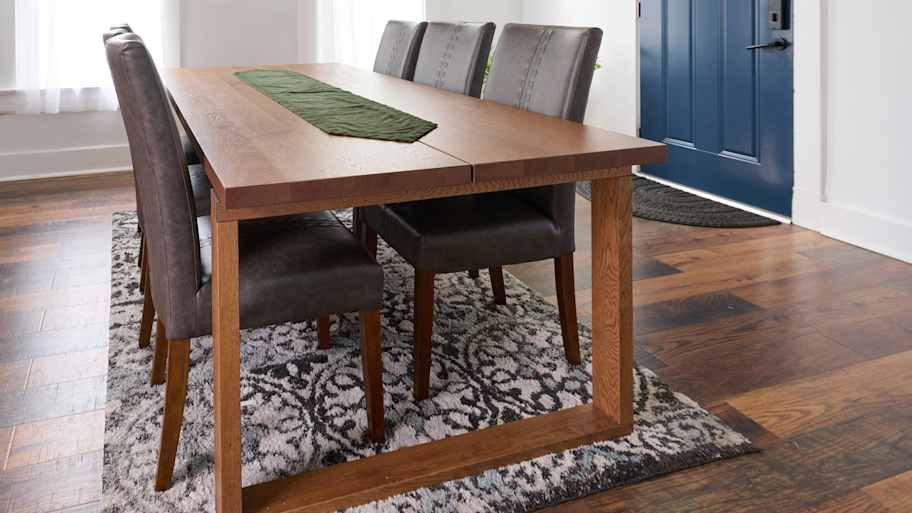

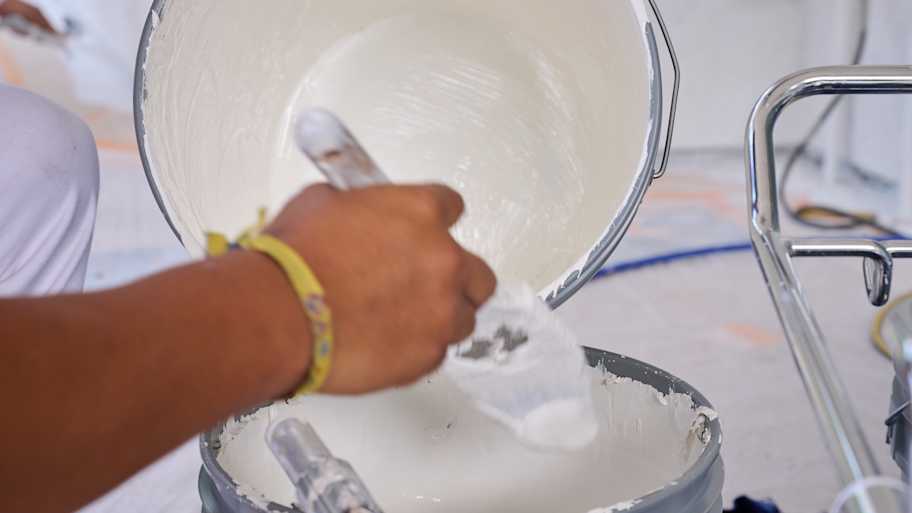
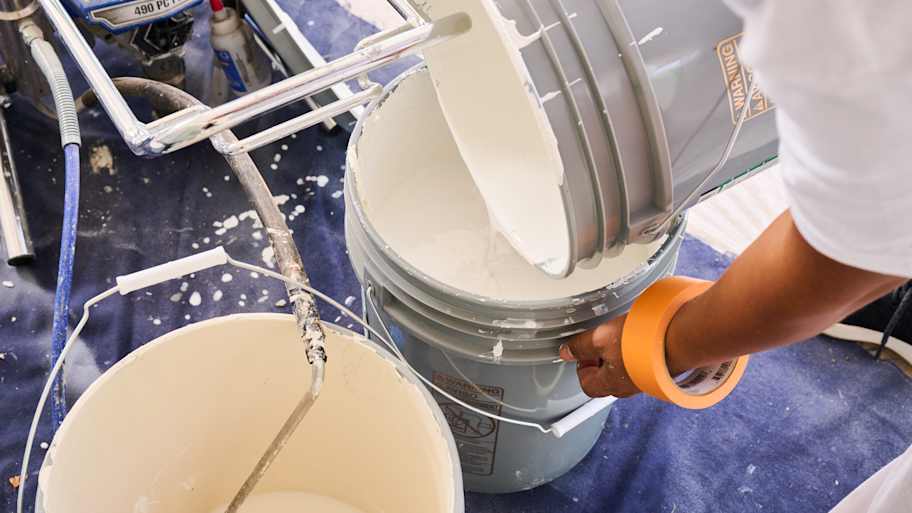
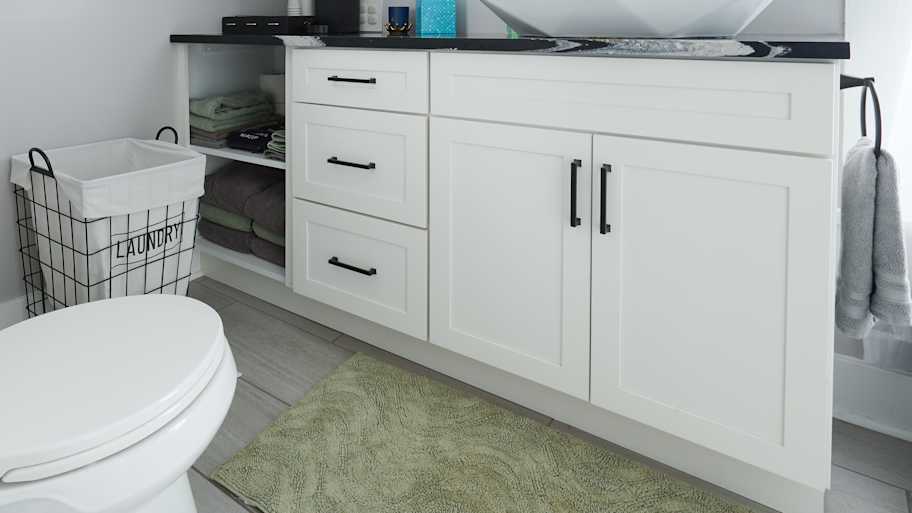
- How to Paint a Bathroom Step-by-Step
- How to Remodel a Bathroom: Everything You Need to Know
- How to Choose the Best Wall Color for Your Open Floor Plan
- 13 Common Mistakes to Avoid When Renovating Your Bathroom
- The Best Living Room Paint Colors to Update Your Space
- How to Pick Exterior House Paint Colors: 11 Tips for Choosing the Perfect Palette
- Bathroom Decorating Ideas to Add Character and Charm
- Best Bedroom Paint Colors and How to Choose One
- What Type of Paint and Finish Is Best for Bathrooms?
- How to Highlight Your Interior Paint With Lighting








